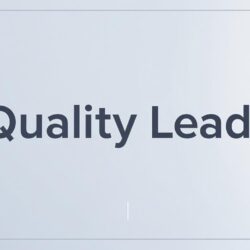Your truck’s seen better days. The engine’s blown, the chassis is twisted, or perhaps it’s been written off after an accident. Now it’s sitting in your driveway or storage yard, bleeding money through registration costs, insurance, and valuable space you could be using for something productive.
Here’s the thing most Brisbane truck owners don’t realise: that damaged vehicle still has significant value. Whether it’s been in a collision, suffered mechanical failure, or simply reached the end of its working life, there’s a thriving market for damaged trucks in Brisbane. The key is understanding how to navigate this market and extract maximum value from what seems like a complete loss.
The damaged truck market has evolved considerably over the past decade. What was once a complicated process involving multiple middlemen, tow truck operators, and endless negotiations has transformed into a streamlined industry. Cash for damaged trucks Brisbane services have emerged as a straightforward solution, connecting truck owners directly with buyers who understand the genuine value locked inside damaged vehicles. This shift has created opportunities for truck owners to quickly convert non-operational assets into immediate capital.
The Hidden Value in Damaged Trucks
Most people see a wrecked truck and think “scrap metal.” That’s selling yourself short by about 70%.
Modern trucks are sophisticated machines containing hundreds of components that retain value regardless of the vehicle’s overall condition. A damaged Isuzu NPR might have a destroyed front end, but its gearbox, differential, and electronics could be worth thousands. Even major structural damage doesn’t eliminate value—it simply shifts where that value lies.
The Australian Bureau of Statistics reported that commercial vehicle recycling contributed over $2.1 billion to the economy in 2023. This isn’t just about melting metal; it’s a sophisticated industry built on component recovery, parts refurbishment, and material recycling. Your damaged truck feeds into this ecosystem at multiple levels.
Consider the typical breakdown of value in a damaged truck:
Mechanical Components: Engines, transmissions, differentials, and hydraulic systems can be refurbished and resold even if the truck itself is beyond repair. A working diesel engine from a damaged truck can fetch $3,000-$8,000 depending on make, model, and hours.
Body Panels and Structural Parts: Undamaged sections have significant value for repair shops and truck owners looking for affordable replacement parts. Cab panels, doors, bonnets, and bumpers are constantly in demand.
Electronics and Technology: Modern trucks contain sophisticated computers, sensors, and navigation systems. These components often survive accidents intact and command premium prices in the aftermarket.
Specialty Equipment: Tipper mechanisms, refrigeration units, tailgates, and other specialty equipment retain value independent of the truck’s condition. A working refrigeration unit alone can be worth $5,000-$15,000.
Raw Materials: Even after component recovery, the remaining steel, aluminium, copper, and other metals have commodity value that fluctuates with global markets.
Understanding Your Truck’s Damage Assessment
Not all damage is created equal, and understanding what you’re dealing with helps set realistic expectations.
Category A Damage: Complete destruction where the truck is unsafe to even salvage parts from. This is rare with trucks and usually involves fire damage so severe that even metal components are compromised. Value here is purely scrap metal weight.
Category B Damage: Extensive damage where the chassis or structural integrity is compromised, but components can be safely recovered. This is where most write-offs land after serious accidents. Value ranges from $2,000-$15,000 depending on the truck’s size and component condition.
Category C Damage: Repairable damage, but repair costs exceed the truck’s value. Common with older trucks experiencing major mechanical failure. These vehicles often fetch higher prices because they’re candidates for rebuilds or organ donation for similar models.
Mechanical Failures: Blown engines, failed transmissions, or seized differentials without accompanying accident damage. These trucks have maximum salvage value because everything except the failed component remains in good condition.
Brisbane’s climate introduces unique factors. Coastal proximity means rust and corrosion issues compound over time, particularly in older trucks. However, our relatively mild weather means most trucks avoid the severe weathering seen in southern states, potentially increasing component value.
The Traditional Selling Challenges
Selling a damaged truck through conventional channels is frustrating.
Private buyers want working vehicles. Even those interested in damaged trucks for parts or projects are rare, negotiations drag on for weeks, and they’ll always want test drives and inspections that waste your time when the truck can’t even start.
Trade-ins at dealerships? They’ll offer a fraction of the truck’s actual value, banking on your desperation to move it. Dealers face the same disposal challenges you do, so they build substantial margins into their offers.
Wreckers and dismantlers operate differently across Brisbane. Some are professional operations offering fair prices and quick service. Others are glorified scrap yards that’ll lowball you and hope you don’t know better. Without industry knowledge, distinguishing between them is difficult.
Then there’s the logistics nightmare. Damaged trucks don’t drive themselves to buyers. Arranging towing, especially for semi-trailers or larger commercial vehicles, can cost $500-$1,500 depending on distance and truck size. These costs eat directly into your profit.
The Modern Solution: Streamlined Damaged Truck Sales
The industry has evolved to solve these problems.
Specialised damaged truck buyers operate throughout Brisbane, offering mobile assessment and same-day payment. These businesses have established networks with dismantlers, exporters, and parts retailers, allowing them to pay more than traditional scrap yards because they can extract more value from each vehicle.
The process follows a straightforward pattern. You provide vehicle details—make, model, year, condition, and damage extent. Many services offer online forms or phone assessments that take 10-15 minutes. Based on this information, you receive a quote that’s typically valid for 7-14 days.
If you accept, the buyer arranges collection at your convenience. Professional operators include free towing in their quotes, removing the logistics headache. Payment happens immediately upon collection—bank transfer or cash, depending on the service and your preference.
This model works because it’s efficient for everyone. Buyers process high volumes, spreading overhead costs and allowing competitive pricing. Sellers get immediate payment without hassles. The market determines fair value through competition between buyers.
Maximising Your Damaged Truck’s Value
Smart preparation can increase your payout by 20-40%.
Document Everything: Maintenance records, service history, and proof of component replacements all demonstrate value. A truck with documented engine work 12 months before failure is worth more than one with unknown history.
Accurate Damage Description: Underplaying damage wastes everyone’s time. Overplaying it costs you money. Be specific: “Front driver’s side collision, cabin pushed back 30cm, engine compartment crushed, airbags deployed, but rear section, gearbox, and differential undamaged” gives buyers accurate information for fair quotes.
Remove Personal Equipment: Toolboxes, GPS units, dash cams, and other accessories you’ve added aren’t typically included in valuations. Remove them before assessment to avoid giving away valuable equipment.
Clear Outstanding Finance: Trucks with finance owing complicate sales. Either clear the debt first or work with buyers experienced in handling encumbered vehicles—though this may reduce your payout.
Timing Matters: Scrap metal prices fluctuate with global commodity markets. While you shouldn’t wait months for optimal prices, checking current rates gives negotiating context. Aluminium and copper prices particularly affect truck valuations.
Multiple Quotes: Never accept the first offer without comparison. Three quotes from different buyers give you market rate understanding and negotiating leverage.
Legal and Administrative Considerations
Queensland has specific requirements for selling damaged vehicles that you can’t ignore.
Transfer of Registration: Even for damaged trucks, you must complete a Notice of Disposal through Queensland Transport within 14 days of sale. This protects you from future liability if the truck changes hands again.
Written Sale Agreement: Always get written confirmation including buyer details, truck identification, sale price, and date. This documentation protects both parties and is essential for tax records.
Insurance Notification: If your damaged truck is insured, notify your provider immediately. Some policies require insurer permission before disposal, particularly if you’ve received a payout.
Roadworthy Certificates: Not required for trucks sold as damaged/not-driveable, but document the condition in writing. If a buyer later claims the truck was sold as roadworthy, you need protection.
Business Asset Disposal: For trucks owned by companies, disposal may have tax implications. Consult your accountant before finalising sales to understand GST, depreciation recovery, and other potential consequences.
Environmental Responsibility in Truck Disposal
Brisbane’s damaged truck market operates under increasingly strict environmental regulations.
The National Environment Protection (Used Packaging Materials) Measure 2011 and Queensland’s Environmental Protection Act 1994 govern end-of-life vehicle handling. Legitimate buyers must hold proper licenses for waste transport and dismantling.
Responsible dismantlers recover and properly dispose of hazardous materials: engine oil, transmission fluid, coolant, brake fluid, and refrigerants. These substances can’t simply be drained into the ground. Professional operators separate, contain, and send them to approved processing facilities.
Battery disposal requires special handling. Truck batteries contain lead and acid, both hazardous. Legitimate buyers either refurbish batteries or send them to licensed recycling facilities that recover lead for remanufacturing.
Tyres present another challenge. Queensland’s landfill levy makes tyre disposal expensive, incentivising recycling. Your damaged truck’s tyres should enter recycling streams producing rubberised asphalt, playground surfaces, and other products.
Selling to licensed, environmentally-compliant buyers costs you nothing extra but ensures your truck’s disposal doesn’t harm Queensland’s environment. Ask buyers about their environmental credentials—legitimate operators are proud to discuss their processes.
Find out more: https://www.localcashforcar.com.au/
The Brisbane Market Landscape
Brisbane’s damaged truck market has unique characteristics shaped by our economy and geography.
The mining sector’s proximity influences demand for heavy-duty truck components. Parts for Mack, Kenworth, and Volvo trucks command premiums because mines constantly need spares for fleet maintenance. If your damaged truck served mining operations, its value likely exceeds standard commercial vehicle rates.
Port of Brisbane’s operations create strong demand for truck parts supporting logistics and transport businesses. Container trucks, particularly Isuzu and Hino models, have robust parts markets because fleet operators need affordable maintenance options.
Agriculture’s importance in Queensland’s economy means demand for rural service trucks and their components remains strong. Light trucks servicing farms—Toyota, Mitsubishi, and Nissan models—have excellent resale potential even when damaged.
Construction’s ongoing boom across Southeast Queensland supports demand for tipper trucks and concrete trucks. Even severely damaged trucks retain value because working components keep construction fleets operational.
Making the Decision: Repair or Sell?
This calculation determines whether your damaged truck becomes an asset or a liability.
Repair makes sense when costs are under 50% of the truck’s post-repair value AND you have ongoing use for it. A truck worth $30,000 after repairs that needs $12,000 in work might be worth fixing if you need that truck for business operations.
Sell when repair costs approach or exceed post-repair value, you don’t have immediate need for the truck, or the damage includes major structural issues. Structural damage never repairs perfectly, affecting resale value and potentially compromising safety long-term.
Consider opportunity cost. Money invested in repairs is unavailable for other purposes. If those funds could generate better returns elsewhere—whether through business investment or purchasing a more reliable truck—selling makes financial sense even if repair is technically viable.
Insurance write-offs complicate decisions. If your insurer has declared the truck a total loss, repair may be legally complicated or impossible depending on the damage category. Even when possible, future insurance becomes difficult and expensive.
Taking Action: Your Next Steps
Ready to convert that damaged truck into cash?
Start with accurate vehicle information gathering. You’ll need make, model, year, VIN number, current registration status, and detailed damage description. Photos showing damage from multiple angles help buyers provide accurate quotes.
Contact multiple buyers simultaneously. Brisbane has numerous damaged truck buyers—use three to five to establish market rate. Provide identical information to each for comparable quotes.
Evaluate quotes based on total value, not just the dollar figure. Factor in towing costs (should be included), payment method, and collection timeline. A slightly lower offer with same-day payment and immediate collection might be more valuable than a higher offer requiring you to arrange towing.
Verify buyer credentials. Check for proper licensing, read online reviews, and confirm they’re registered businesses. Legitimate operators welcome questions about their processes and credentials.
Complete all paperwork properly. Don’t skip the Notice of Disposal or sale documentation. These protect you legally and financially.
Your damaged truck isn’t a problem—it’s an asset waiting for proper conversion. Brisbane’s market offers fair value and efficient processes for truck owners ready to act. The sooner you engage with professional buyers, the sooner you’ll convert that space-consuming liability into working capital for your next venture.





